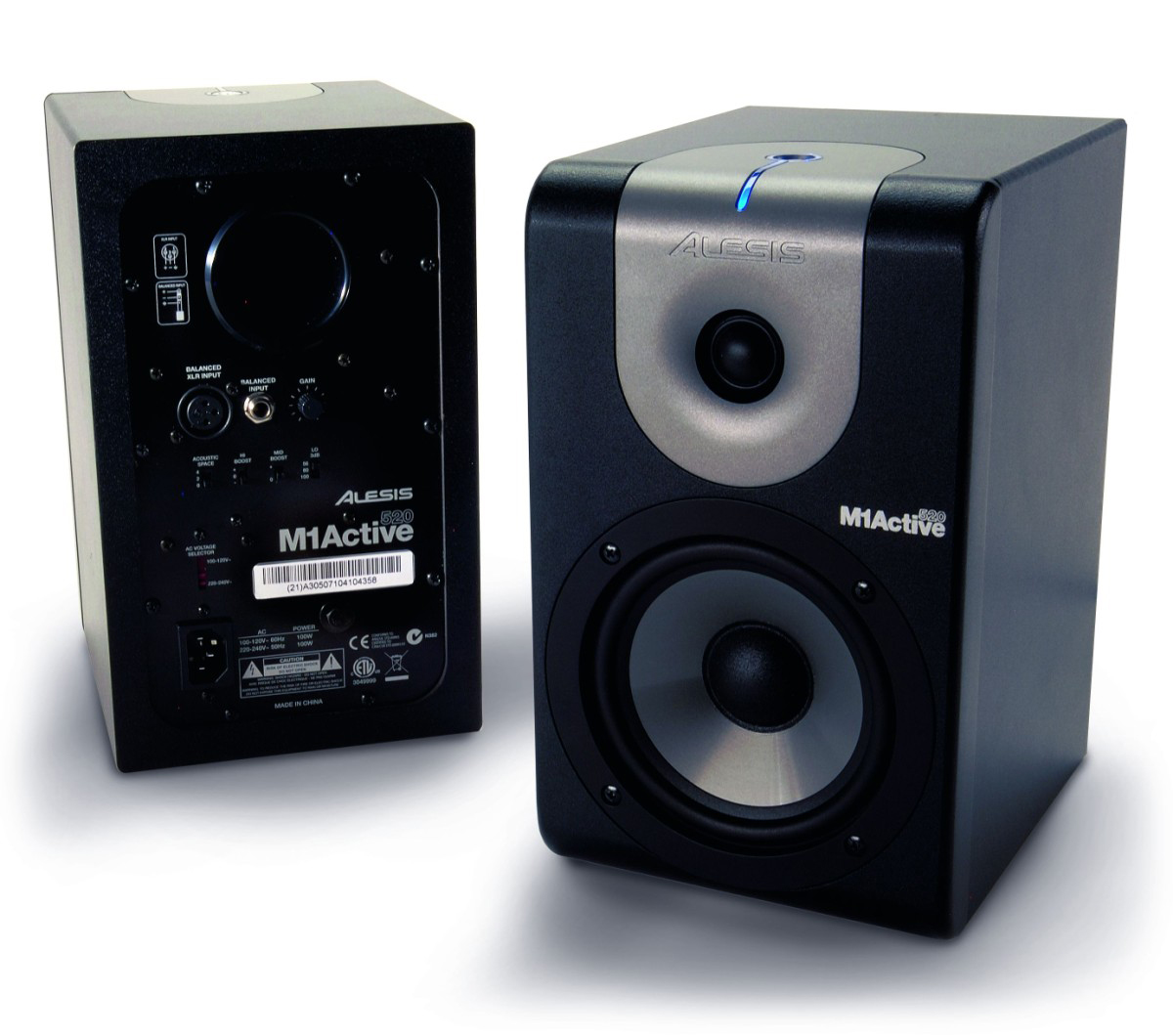MusicRadar Verdict
Solid performers with a super-clean, uncluttered sound.
Pros
- +
Good all-round monitors. Decent price.
Cons
- -
Not brilliant at the extreme bass end.
MusicRadar's got your back
In the world of music tech, it seems like we've never been offered so much for so little.
Whether it's a soft synth replicating a vintage analogue monster, or a convolution reverb that accurately captures the world's greatest acoustic spaces for the same price as a decent box of wine; we've never had it so good, and neither have our bank balances.
As in any market, greater competition leads to lower prices. Therefore, increasing affordability has not been limited to the software world of VSTs and DAWs.
Around three years ago the active monitor market underwent somewhat of a renaissance too, with several excellent models becoming available for a fraction of past pricing.
Heading this new wave of affordable quality was, and still is, Alesis' M1 Active range. The 520s are on test here, but also available are the slightly larger 620s with, among other minor improvements, a slightly wider frequency response.
Connections
Alesis have provided both XLR and TRS inputs for convenience, so it's just a question of switching on the power button and dialling in some gain on the back panel to get going.
Despite their size, these monitors can be cranked to considerable levels, so getting sound across a small distance won't be too much of a problem, if that's what you need.
Inputs
Next, the inputs round the back. Alesis provide flexibility in the form of cut/boost switches for bass, mid-range and treble.
'Lo' acts as a high-pass filter, with roll-off offered at 56, 80 or 100Hz, the last of which helps you accommodate a sub-woofer.
The mid-range control allows for a 2.5dB boost at 1.8kHz, which again proves useful for those monitoring over greater distances.
'Hi-Boost' engages an optional 2dB shelving filter to brighten or deaden the top end.
Alesis also provide an acoustic space switch that provides some flexibility when placing these monitors near studio walls. As bass frequencies are boosted by proximity to walls, ceilings and surfaces (the Baffle-Step effect), 'Acoustic Space' compensates by offering regular, half-space and quarter-space settings, which in turn offer greater bass reduction.
This combination of options doesn't match the flexibility of a system like Tannoy's ActivAssist, yet it's possible to get a good, representative sound from the M1s under most studio conditions.
Sound
These monitors sound very clean, considering their size. The treble is shiny without being coloured, and the mid-range is solid and dependable without becoming distorted or cluttered. While the bass will always be a little compromised on a monitor of this size, the M1s don't lack weight.
If you're a sub-bass junkie, then these probably aren't the only speakers to test your mixes on, but you probably knew that already.
Instead, these are monitors to switch on, listen to all day and kind of forget about. And we mean that as a compliment…
Performance
The Alesis M1 520s are good performers that won't wear you out or give you a false impression of your mix. With very few exceptions, they do a good job irrespective of the music you're looking to make.
As ever, for a box this size the bass end isn't too expansive and with a frequency response reaching down to only 56Hz, you'll need other reference monitors if you're doing crazy stuff down there.
If you're looking at monitors around this price point, we'd certainly suggest you try these bad boys.
Future Music is the number one magazine for today's producers. Packed with technique and technology we'll help you make great new music. All-access artist interviews, in-depth gear reviews, essential production tutorials and much more. Every marvellous monthly edition features reliable reviews of the latest and greatest hardware and software technology and techniques, unparalleled advice, in-depth interviews, sensational free samples and so much more to improve the experience and outcome of your music-making.

“This is a beautiful, well-executed Les Paul, and that’s the sort of guitar you tend to hold onto for life. That’s as sound an investment as there is”: Gibson Les Paul Standard ‘50s Double Trouble review

“We were able to fire up a bass sound that was indistinguishable from the flavour of New Order’s Blue Monday in seconds”: EastWest Sounds Iconic review

“How long did it take me to get over it? Oh, quite a while”: Brian May on the “supreme injustice” of Roger Taylor’s Queen B-side "making as much money as Bohemian Rhapsody"









